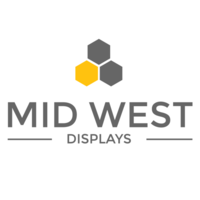In today's fast-paced digital age, the world of marketing and communication has witnessed a revolutionary shift towards innovative solutions, and one such game-changer is the digital menu board. As businesses strive to enhance customer engagement and streamline operations, understanding the concept of a digital menu board has become indispensable. In this insightful blog post, we delve into the intricacies of digital menu boards, unraveling their benefits, functionality, and the transformative impact they have on various industries.
Defining Digital Menu Boards:
At its core, a digital menu board is a dynamic electronic display that replaces traditional static menu boards.
It uses cutting-edge technology, such as LED, LCD, or OLED screens, to showcase captivating visuals and dynamic content. This includes menu items, pricing, promotions, videos, and other engaging multimedia. Digital menu boards redefine the way businesses communicate with their audience, offering a modern and visually appealing approach to information dissemination.
Key Benefits of Digital Menu Boards:
-
Enhanced Visual Appeal: Digital menu boards captivate customers' attention with vivid imagery, vibrant colors, and eye-catching animations, effectively enticing them to explore the offerings.
-
Real-time Updates: Businesses can instantly update content across multiple locations, ensuring accurate pricing, promotions, and product availability without the hassle of printing new materials.
-
Personalised Content: Digital menu boards allow businesses to tailor content based on factors like time of day, location, and customer preferences, enhancing the overall customer experience.
-
Cost Efficiency: While initial setup costs might be higher, digital menu boards eliminate recurring expenses associated with printing and shipping traditional menus.
-
Eco-Friendly: By reducing paper waste and promoting a paperless environment, digital menu boards contribute to a sustainable and environmentally conscious operation.
-
Increased Upselling: Dynamic content and strategically placed visuals can encourage customers to explore additional menu items, boosting upselling opportunities.
-
Centralized Control: With remote management capabilities, businesses can control and update content across various locations from a single, convenient interface.

Functionality and Features of a digital menu board
Digital menu boards offer a plethora of features that empower businesses to create impactful visual experiences:
-
Daypart Scheduling: Display different menus or promotions based on the time of day, catering to breakfast, lunch, and dinner offerings.
-
Animated Graphics: Engage customers with eye-catching animations, motion graphics, and transitions that convey a sense of dynamism and excitement.
-
Integration with POS Systems: Seamlessly integrate digital menu boards with point-of-sale systems to reflect real-time pricing and inventory changes.
-
Weather Integration: Provide customers with relevant information by displaying weather updates, suggesting suitable menu choices based on the weather conditions.
-
Interactive Touchscreens: Elevate customer engagement with interactive touchscreens that enable browsing, customization, and order placement directly from the digital menu board.
-
Social Media Integration: Incorporate social media feeds, user-generated content, and customer reviews to build trust and authenticity.
-
Analytics and Insights: Gain valuable insights into customer preferences and behavior through data analytics, enabling informed decision-making.
Transforming Industries:
The impact of digital menu boards transcends various sectors:
-
Hospitality: Restaurants, cafes, and fast-food chains enhance customer satisfaction through visually appealing menus and real-time updates.
-
Retail: Retailers promote special offers, highlight featured products, and create immersive shopping experiences using digital displays.
-
Healthcare: Hospitals and clinics utilize digital menu boards to communicate health information, appointment schedules, and wellness tips.
-
Education: Educational institutions streamline cafeteria operations, display daily menus, and promote healthy eating habits among students.
-
Entertainment: Cinemas, theaters, and event venues employ digital menu boards to showcase concessions and special promotions.
Conclusion:
In the ever-evolving landscape of business communication, digital menu boards have emerged as a powerful tool to engage, inform, and delight customers. Their ability to convey dynamic content, provide real-time updates, and create immersive experiences positions them as an essential asset across diverse industries. As technology continues to advance, embracing digital menu boards is not just a trend, but a strategic move towards enhancing customer engagement, operational efficiency, and environmental sustainability. By harnessing the potential of digital menu boards, businesses can carve a unique competitive edge in today's dynamic market.


